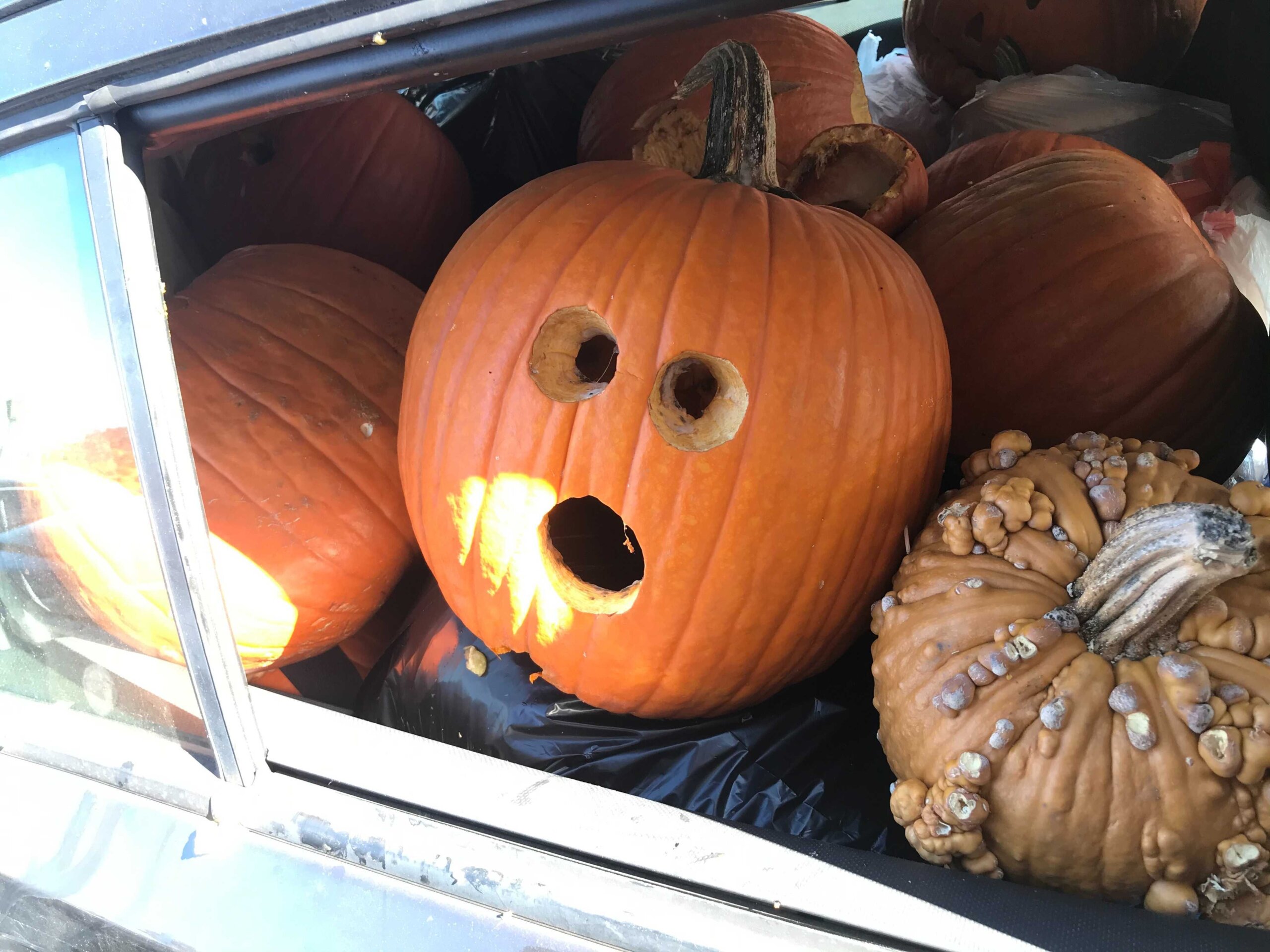This video is no longer available.
After your jack-o’-lantern has served its purpose on Halloween, don’t toss it to the curb.
Experts said it’s spooky just how much damage pumpkins can do to the environment as more than 2 million pounds of pumpkins end up in landfills worldwide every Halloween.
Those that end up in landfills can emit methane, a greenhouse gas that’s 20 times more harmful than CO2, according to a D.C.-area group called Pumpkins for the People.
There are tons of options in the D.C. area for donating your pumpkins.
“It is a 2 billion pound-a-year problem that we can solve one pumpkin at a time,” said Jeremy Brosowsky, founder and CEO of Agricity, which operates the Pumpkins for the People program.
Food waste in the U.S. accounts for 8% of global greenhouse gas emissions, according to the program.
“Changing people’s behavior and implementing infrastructure that enables people to waste less, and to make sure that what they do waste gets sent to the right places and is used for meaningful purposes, it’s what we do,” Brosowsky said.
His group takes leftover pumpkins at donation sites. Any carved-up jack-o’-lanterns can be smashed into pieces and used for compost.
Before you donate, make sure to remove any candles. The organization also doesn’t take painted pumpkins.
They also take pumpkins and squash that are unblemished to feed people in the community with the help of partnerships with organizations such as Martha’s Table.

You can find one of the 21 drop-off sites in the D.C. area on the service’s website. Unlike most businesses, Brosowsky said the next three weeks will be his busiest of the year.
“If you are interested in claiming pumpkins for your school, for your not-for-profit organization, for your kitchen, whatever it might be, those pumpkins are then going to be made available for people to pick up at the end of market each day for the next three weekends,” Brosowsky said.
But pumpkins aren’t just a seasonal treat for people.
Loudoun County-based Pumpkins for Pigs turns your leftover jack-o’-lanterns into feasts for animals at farms, animal sanctuaries and rescues around the country. You can search for a drop-off site on its website.
Mill Road Farm, which is located south of Leesburg, Virginia, has been a drop-off site since the organization began accepting donations in 2017, according to Sarah Hatch, who helps the farm with her father.
The organization has since grown to 600 collection centers around the U.S., according to its website.
Despite its name, it feeds many types of livestock.
“It’s not just for pigs,” Hatch said. “Cows, sheep … goats and we have a horse, and she doesn’t really care for it.”
Once the pumpkins are in sight, Hatch said those farm animals know they’re in for a sweet snack beyond their typical diet of hay or grain.
“You throw it over. You crack it open. They devour it,” Hatch said. “They eat the innards, the seeds, just the whole pumpkin.”
When you’re ready to dump your pumpkin, Hatch said you can drop it off in a bin at the end of the farm’s driveway.
The impact goes beyond this season, Hatch said leftover seeds sometimes grow into pumpkins that they can also use feed the animals.
“I think we’ve got probably about around 250 little pumpkins this year from regrowth from previous years,” Hatch said.
Get breaking news and daily headlines delivered to your email inbox by signing up here.
© 2024 WTOP. All Rights Reserved. This website is not intended for users located within the European Economic Area.








